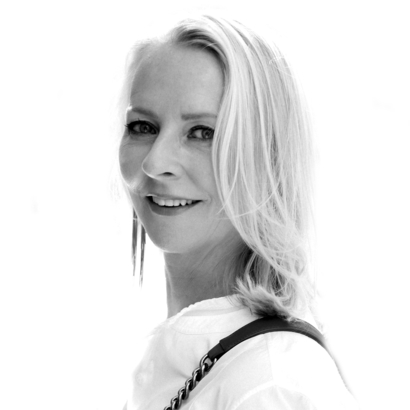Perhaps you’ve heard: Hope is making a comeback. Cottage cheese, too.
Way to ruin the mood, I know. But you’d be shocked at how many people are hyped about both hope and the curdled, watery, flavorless dairy product that was previously disgusting. Yes, it’s the same stuff your mother ate on top of a halved grapefruit when she was being good and feeling sad. But according to TikTok, cottage cheese can be made into brownies or, covered with chocolate chips and peanut butter, a faux Reese’s cup. It can also “give major burrata vibes.” And if you put it in a coupe, shower it with lemon zest, and photograph it in dappled light, you can call it “cute” in a caption.
“We’re taking back cottage cheese,” says Shira Barlow, a registered dietitian and the author of The Food Therapist. Why? “Cottage cheese is insanely high in protein, and it can make everything creamy and delicious.” If you say so. When you consider that the alternative for non-meat-eaters is chalky protein powder, you’d be jazzed about cottage cheese, too, ideally after you whir it in your Nutribullet with 16 other ingredients to disguise its flavor and alter its texture. You could, as one TikToker suggests, serve it at a dinner party and, shh, no one will know.
When Barlow senses my revulsion, she puts things in perspective. “Millennial women who grew up with moms who were doing the whole fat-free craze, the diet sodas, Splenda”—don’t forget SnackWell’s cookies—“there’s so much unlearning to be done.”
Listen to any number of podcasts and you’ll hear the learning too. It boils down to one word: protein. Several diet trends ago, everyone was focused on restricting calories and fat and, in the process, simply ignored protein. Now protein is giving main-character energy. “The bros have always known this, but we”—meaning women—“have not,” says Gabrielle Lyon, M.D., author of Forever Strong.
The current thinking among these evangelists is that most people need to eat one gram of protein for every pound of body weight, although some experts believe this might be excessive unless you’re a weight-lifting athlete. I’m lucky if I reach 30 grams a day. “I was abysmal,” says Amy Shah, M.D., author of I’m So Effing Hungry. For years she subsisted on salads, a few nuts, and coffee. “The diet was always focused on getting smaller, but as you get older you don’t necessarily want to get weaker or smaller.”
“Millennial women who grew up with moms who were doing the whole fat-free craze, the diet sodas, Splenda—there’s so much unlearning to be done.”
It turns out, protein is crucial for building and maintaining lean muscle mass, strengthening bones, and supporting the metabolism and hormones that regulate blood sugar, says Barlow. Prioritizing protein has become a rallying cry.
Raise your hand if you go straight from bed to your workout in the morning without stopping for breakfast. That’s me. Experts in exercise physiology and nutrition, most vocally Stacy T. Sims, the author of Next Level: Your Guide to Kicking Ass, and so on, say you have to eat protein before a workout to give your body the fuel it needs to build muscle. And that workout has to include resistance training.
For decades, women shied away from weight lifting, instead doing cardio to burn calories. Now research shows that we start losing crucial muscle at around 35 to 40 years old, and, once we go through menopause, our muscle mass drops through the floor. The combination of weight work and dietary protein is the best revenge. With that, says Dr. Lyon, “we can change the trajectory of aging.”
The results can be swift. “Even small changes can make you feel better within days,” says Dr. Shah. She recommends greeting the morning with 30 grams of protein. “The cravings, the energy, get so much better if you do that,” she says. “That sets the stage for a better day.” She recommends scrambled eggs with, don’t faint, cottage cheese. Or how about a Greek yogurt, chia seed, nut, and berry parfait? Doesn’t a parfait sound delightful?
I now mix yogurt with whey-protein powder every morning—hardly a delectable French dessert—and choke it down before a Pvolve session. But Sarah Wragge, a nutrition coach, won’t entertain my grumbling. “You need to take the foodiness out of you and think, How am I going to get my fuel for the day?” But what if I don’t want to? “Be a foodie at dinner!”
Wragge offers herself as an example. She was a fan of “rice, beans, and sauerkraut, yum,” which she’d have after a yoga or dance class. Now, she says, “I’m a strength trainer and a meat eater. Lifting heavy weights and eating burgers. My body has completely changed. And I’ve never felt more energetic.” For a compelling argument, watch her do plated planks and chin-ups on Instagram.
Wragge admits that getting enough protein is a chore. When I worry that I might have no choice but to start gnawing on venison jerky like a real longevity expert, Barlow tells me to relax. “This isn’t a prison.”
She sings the praises of bison, organ meats, and chicken thighs. “I mean, come on! A chicken thigh is so flavorful. I would love to myth-bust that you have to eat white meat to be healthy.” But she also isn’t strict about the concept of one gram of protein for every pound of body weight. If you weigh 132 pounds, she says, you may need between 96 and 100 grams of protein rather than a full 132. Try your best. Think big picture.
There’s another reason for the current heightened interest in protein. As more and more people take Ozempic, Mounjaro, Wegovy, and other GLP-1 drugs to lose weight, they also have to be mindful of the effect on muscle. “If you’re losing 10 pounds or more a month, you’re risking muscle loss,” says Dr. Shah. And as tempting as it is to drop weight quickly, she warns against it. “If you keep your exercise and protein up, you’ll have the best chance of not getting the side effect of the drooping face and the loss of muscle,” she says. That’s all the more reason to make high-quality protein the centerpiece of every meal and to eat that first “before getting too full.”
Sure, high protein is the latest diet fad, but piles of evidence support its benefits. Dr. Shah sees most trends, this one included, as a re-framing of the Mediterranean diet. You might not find cottage cheese at La Grande Épicerie, but ask for le cottage. I’d say, “Bon appetit,” but who am I kidding? Bonne chance!
Linda Wells is the Editor at Air Mail Look





